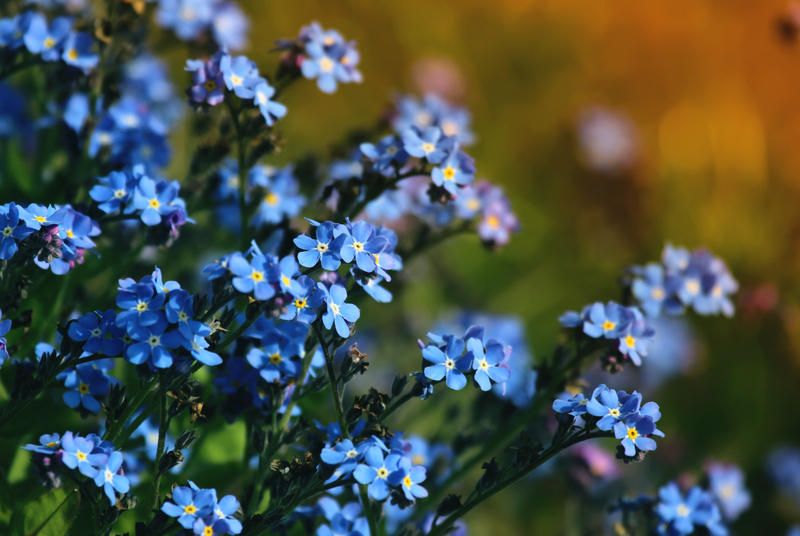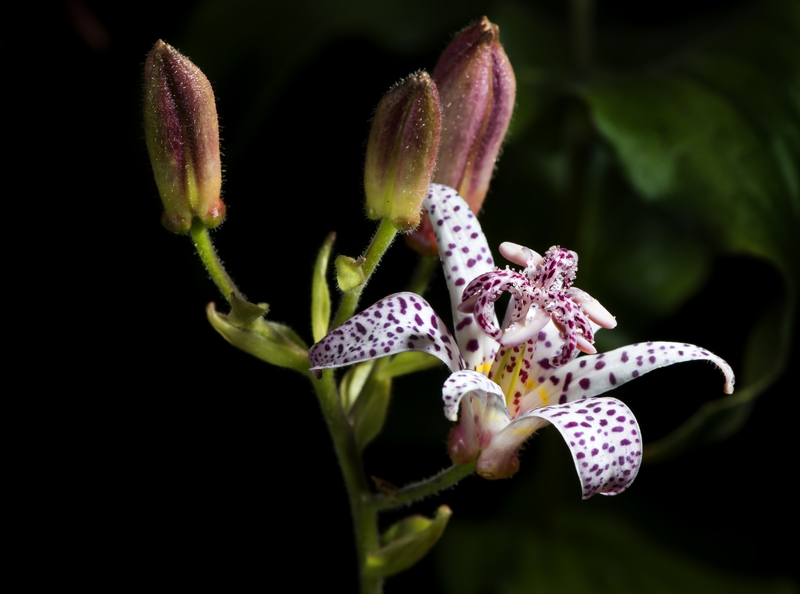Expert Methods to Tackle Unwanted Weeds
Posted on 31/05/2025
Expert Methods to Tackle Unwanted Weeds
Weeds can quickly become the bane of any gardener or homeowner's existence. Not only can they mar the beauty of a carefully designed landscape, but they also compete with desired plants for sunlight, water, and nutrients. If you're struggling to control these invasive plants, you're not alone! This comprehensive guide explores expert methods to tackle unwanted weeds, presenting both traditional and innovative approaches to weed management. Whether you maintain a sprawling garden or a compact urban yard, the following strategies can restore vitality and aesthetic appeal to your outdoor space.

Understanding Weeds: The First Step to Effective Control
Before delving into effective weed control methods, it's crucial to understand what weeds are and why they thrive. Weeds are typically defined as any plant growing where it's not wanted. Common examples include dandelions, crabgrass, clover, and bindweed. These resilient plants are expert opportunists, often thriving in disturbed soils and outcompeting other vegetation.
The Life Cycle of Weeds
- Annual Weeds: Complete their life cycle in one growing season (e.g., crabgrass, chickweed).
- Biennial Weeds: Take two years to complete their lifecycle (e.g., wild carrot).
- Perennial Weeds: Live for several years, regrowing each season from roots (e.g., dandelion, bindweed).
Understanding a weed's life cycle is vital in developing a targeted weed removal strategy. For instance, annuals can often be controlled with surface treatments, while perennials might require more persistent efforts to destroy their root systems.
Manual Weed Control: Hands-On Techniques for Immediate Results
One of the oldest and most reliable methods to tackle unwanted weeds is good old-fashioned manual removal. Although labor-intensive, these techniques are effective and environmentally friendly.
Hand Pulling
- Best for: Small infestations and younger weeds.
- Tips: Moisten the soil beforehand for easier removal, and ensure you pull up the entire root, especially for perennial weeds.
Hoeing
- An ideal method for dealing with annual weeds in garden beds and vegetable patches.
- Technique: Use a sharp hoe to cut weeds just below the soil's surface.
Mulching
- Applying a thick layer of mulch (organic or synthetic) suppresses weed growth by blocking sunlight.
- Common mulches include: Wood chips, straw, bark, or even landscape fabric.
Manual weed control techniques are most effective when weeds are small and before they set seed. Regular maintenance will drastically reduce unwanted weed populations over time.
Cultural Weed Management: Enhancing Your Garden's Health
Cultural practices play an essential role in preventing weed invasions. Strong, healthy lawns and gardens are less susceptible to weed encroachment. Here are several expert-recommended strategies:
-
Dense Planting:
- Planting groundcovers, perennials, or turfgrass tightly limits open soil space for weeds to establish.
-
Crop Rotation:
- In vegetable gardens, rotating crops regularly disrupts weed life cycles and reduces persistent infestations.
-
Proper Watering:
- Watering only the roots of desired plants deprives weeds of moisture and focuses resources where they're needed.
-
Soil Health:
- Enriching and maintaining healthy soil with compost and organic matter promotes vigorous plant growth and competition against weeds.
By integrating these cultural weed control approaches into your landscape or garden management plan, you can minimize the need for herbicides and physical removal.
Biological Control: Let Nature Fight the Weeds
For those seeking natural weed management tactics, biological control harnesses the power of living organisms to reduce weed populations. Biological control agents include insects, grazing animals, and microorganisms that specifically target unwanted weeds.
Examples of Biological Weed Control
-
Grazing:
- Animals such as goats and sheep can clear invasive brush and weeds in larger landscapes.
-
Beneficial Insects:
- Certain beetles and weevils feed on specific noxious weeds, helping reduce their spread.
-
Pathogenic Fungi:
- Some fungal species infect and kill particular weed varieties.
While biological weed control is more commonly used in agricultural or naturalized environments, elements of this strategy can also be implemented in private gardens with caution and expert guidance.
Chemical Weed Control: Selective Herbicide Applications
Sometimes, especially with large areas or persistent perennial weeds, chemical weed control is necessary for rapid results. Selective herbicides target specific weed types (such as broadleaf or grassy weeds), while non-selective herbicides kill most vegetation they contact.
- Always follow label instructions carefully to prevent harm to desired plants and the environment.
- Apply herbicides during calm, dry weather to reduce drift and maximize effectiveness.
- Use spot-treatments rather than blanket spraying to limit chemical use.
Modern herbicide formulations offer increased safety and specificity, but it's best to use these products judiciously and as a last resort. Integrated Pest Management (IPM) principles recommend combining chemical methods with manual, cultural, and biological techniques for sustainable, long-term control.
Organic and Eco-Friendly Solutions for Stubborn Weeds
If you prefer to avoid synthetic chemicals, there are several organic weed control methods you can try. These tactics are safer for pollinators, pets, and children, making them suitable for home gardens and neighborhoods.
Homemade Weed Killers
- Vinegar: Household vinegar (5% acetic acid) can burn soft weeds, though horticultural vinegar (20% acetic acid) is more potent.
- Boiling Water: Pouring boiling water directly onto weeds is a highly effective method for driveways, patios, and sidewalk cracks.
- Salt Solution: A moderate amount of salt mixed with water can desiccate weeds. Use sparingly, as salt can damage soil structure.
Note: While natural, these solutions are still non-selective and may harm surrounding plants if not applied with precision.
Corn Gluten Meal
Used as a pre-emergent, corn gluten meal prevents weed seeds from germinating. It's a safe and environmentally friendly way to stop unwanted weeds before they start, especially in lawns.
Solarization
Solarization involves covering soil with clear plastic in the heat of summer. The sun's trapped heat "cooks" weed seeds and pathogens in the upper soil layer. This method is particularly useful for preparing new beds or eradicating persistent weed populations.
Preventative Measures: Stop Weeds Before They Start
An ounce of prevention is worth a pound of cure. Here are some preventative expert tips to keep unwanted weeds at bay:
- Inspect New Plants: Always check nursery plants for attached weed seeds or roots before planting.
- Use Clean Mulch and Soil: Contaminated mulch or soil can introduce new weed populations.
- Regular Lawn Maintenance: Mow at the correct height and fertilize appropriately to keep grass thick and competitive against weeds.
- Repair Bare Patches: Promptly reseed or sod any bare areas in your lawn or garden to prevent weed colonization.
Seasonal Weed Control: Timing Is Everything
Timing your efforts can maximize the efficiency of your weed control program. Different seasons require slightly adjusted tactics:
Spring
- Apply pre-emergent herbicides and mulch early to intercept germinating seeds.
- Hand pull or hoe annual weeds before they flower.
Summer
- Monitor perennials and spot treat persistent weeds.
- Use solarization to clear larger areas if feasible.
Autumn
- Target perennial weeds as they transfer nutrients to roots (making herbicide applications more effective).
- Lay down winter mulch to suppress late-emerging weeds.
Winter
- Plan your crop rotations and garden layouts for the next season.
- Inspect and clean gardening tools to avoid spreading seeds.

Innovative and Emerging Weed Management Technologies
As we move forward, technology continually offers new ways to eliminate and control unwanted weeds. Here are some cutting-edge options:
-
Robotic Weeders:
- Autonomous robots identify and mechanically remove weeds in agricultural fields and, increasingly, in home gardens.
-
Targeted Laser Systems:
- High-tech lasers target and destroy weed foliage without disturbing surrounding plants.
-
Drone Spraying:
- Drones equipped with AI and precision sprayers apply herbicides only where needed, reducing chemical reliance.
-
Bioherbicides:
- Products using natural pathogens, such as specific bacteria or fungi, to selectively target weeds.
These advanced weed control techniques may soon become commonplace, making yards and gardens more manageable for everyone.
Conclusion: Take Control with Expert Weed Solutions
Dealing with unwanted weeds requires a thoughtful combination of techniques, from manual removal and preventative landscaping to intelligent use of herbicides and innovative new technologies. By understanding the biology of weeds and adopting a multi-pronged, integrated approach, you can minimize their impact and keep your landscape thriving.
Remember, the best methods to tackle unwanted weeds are proactive, persistent, and aligned with your gardening goals and environmental values. Stay informed, stay vigilant, and your garden will thank you for it!

